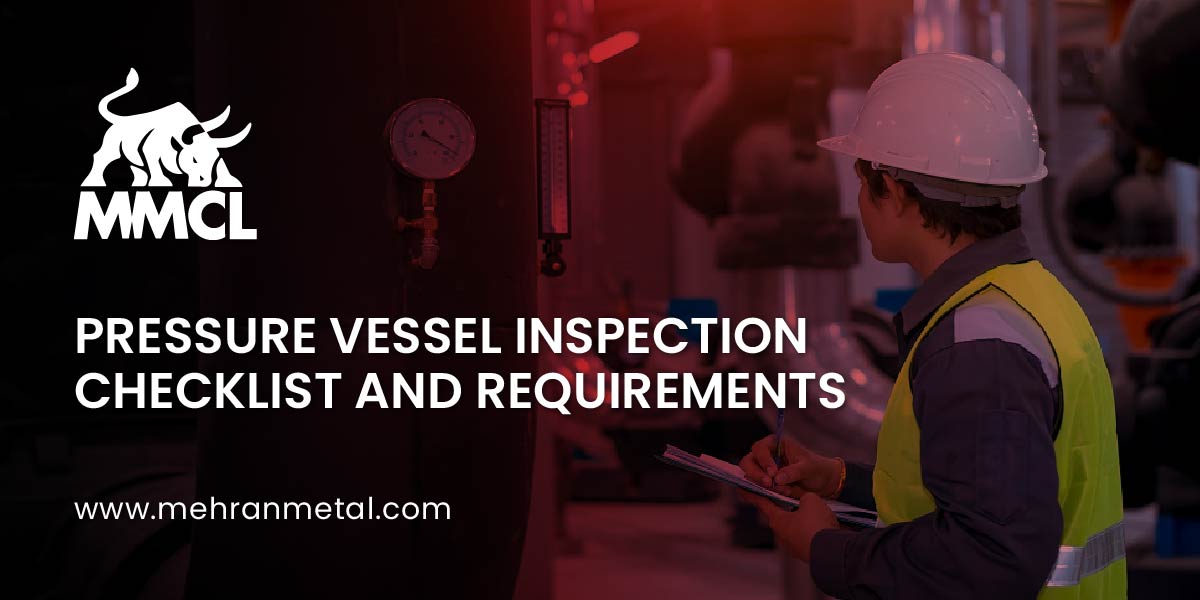Pressure vessels are essential elements for several industries, including natural gas and oil production, chemical, and manufacturing sectors. Periodic inspections are essential to ensuring sound operation since these storage vessels contain enormous potential energy. The following paragraphs will provide you with a thorough checklist and highlight what has to be done to make sure all operations are secure.
What are Pressure Vessels?
Pressure vessels are containers designed to hold liquids or gaseous substances at pressures that vary considerably from the atmospheric pressure around them. Numerous sectors, including manufacturing, petroleum and natural gas, chemical processing, and power generation, employ these vessels.
They are available in a variety of sizes and forms, from massive industrial boilers or reservoirs to little propane tanks. Pressure vessels are designed to resist the internal stresses generated by the contents they store. For optimal safety, they must be designed and manufactured following stringent guidelines and requirements.
Usually, robust materials like stainless steel. are employed in their construction. The regulations include specifications for pressure vessel materials, designs, fabrications, inspections, and upkeep.
The awareness of the numerous stress variables, such as internal pressure, external loads, temperature fluctuations, and corrosion, that can affect a pressure vessel’s integrity is necessary for optimal functionality. A thorough comprehension of these variables is also essential for the longevity and safe performance of pressure vessels.
Why are Routine Inspections Important?
Periodic inspections of pressure vessels are crucial for assuring their continuous safety and compliance with industry requirements. Fatigue fractures, corrosion, leaks, and mechanical deformations are among the many complications that might happen to pressure vessels over time. These conditions jeopardize their structural integrity and increase the likelihood of malfunctions.
Inspections assist in locating and resolving these concerns before they worsen and evolve into more serious challenges. They are carried out by highly trained professionals who evaluate the vessel’s condition using visual inspections, non-destructive testing (NDT) procedures, and other inspection techniques.
By identifying any flaws, corrosion, or metal loss, these evaluations can avert catastrophic failures by enabling prompt repairs or replacements. Periodic inspections assist businesses in adhering to regulatory and legal guidelines for the operation and upkeep of pressure vessels along with ensuring the safety of individuals dealing with or near pressure vessels.
Inspections can contribute to a pressure vessel’s longer service life by minimizing the possibility of unanticipated malfunctions, which can result in expensive downtime, hazardous mishaps, or casualties.
Pressure Vessel Inspection Checklist
Pressure vessels should typically undergo inspection every 5 years and inspections every 2 years.
To verify pressure vessel safety and identify any possible cracks, visual inspections of pressure vessels i.e. storage tanks and vessels that function at pressures higher than 15 psig, should also be carried out following installation, before use, and amid maintenance. This also accounts for high-pressure vessels, which need to be inspected and monitored regularly.
1. Documentation Verification:
• Verify the availability and accuracy of all required documents, including blueprints, construction records, and former inspection certificates.
• Ensure that all operational characteristics of the pressure vessel, including temperature, materials, and maximum allowable working pressure (MAWP), comply with the specified parameters.
2. External Inspection:
• Look for any indications of physical deterioration, distortion, or corrosion on the pressure vessel’s surface.
• Inspect all fittings, connections, and supporting components for breaches.
• Inspect the insulation, heat tracing systems, and barrier coatings for deterioration.
3. Internal Inspection:
• Examine the interior thoroughly to look for any indications of sediment accumulation, rust, or flaking.
• Examine joints, seams, and welds for degradation, gaps, or indications of strain.
• Evaluate the state of interior components, including support structures, baffles, and trays.
4. Pressure Testing:
• Perform hydrostatic or pneumatic pressure testing based on container and standards.
• Document pressure test findings and confirm that they adhere to the requirements.
5. Relief Devices and Safety Features:
• Check the rupture discs, safety features, and pressure relief valves for proper operation and condition.
• Verify that the relief devices have been calibrated and configured per the design requirements.
6. Instruments and Controls:
• Verify the accuracy and appropriate operation of pressure gauges, temperature indications, level indicators, and other instruments.
• Check that safety interlocks and control systems are calibrated correctly.
7. Evaluation of Accessories and Attachments:
• Examine the integrity and quality of all accessories, including fittings, manways, flanges, and connections.
• Verify that accessories like flow meters, level switches, and pressure transmitters can function as intended.
8. Non-Destructive Testing:
Use Non-Destructive testing methods to find internal faults or problems, such as radiographic inspection and ultrasonic testing.
9. Documentation and Reporting:
• Draft a thorough report that includes all inspection results, including readings and images.
• Draw attention to any anomalies found or suggested improvements.
• For purposes of reference and inquiry, preserve records of the inspections and reports.
Keep in mind that the above checklist is only meant to be regarded as a basic reference and should be adjusted to conform to local industry laws, standards, and regulations. For an in-depth and in-line inspection procedure, collaborate with experts and refer to any relevant guidelines.
Key Requirements for Successful Inspections
Thorough planning and meticulous attention to detail are prerequisites for effective inspections. First and foremost, it’s critical to comprehend the precise criteria and inspection objectives. This involves setting up a checklist or methodology to make certain that all relevant areas or parts are carefully inspected.
Furthermore, it is essential to coordinate and communicate effectively with all pertinent parties, including the customer, contractors, and regulatory agencies.
Correct and updated documentation—such as construction plans, specifications, and safety rules—is essential for conducting effective inspections.
Common Defects: What to Look Out For?
Inspectors need to be on the lookout for common flaws that might develop in all kinds of pressure vessels. Inspectors appointed for conducting pressure vessel inspections must be vigilant regarding equipment failures, poor maintenance, and disregard for health and safety protocols.
In general, accurate findings and suggestions to guarantee the safety and compliance of pressure vessels require a thorough grasp of prevalent issues.
Final Remarks:
Maintaining precautionary standards in pressure vessel operations is essential to avert mishaps and safeguard individuals from harm. The main components of guaranteeing safe operations include extensive checklists, routine inspections, and adherence to industry regulations.

